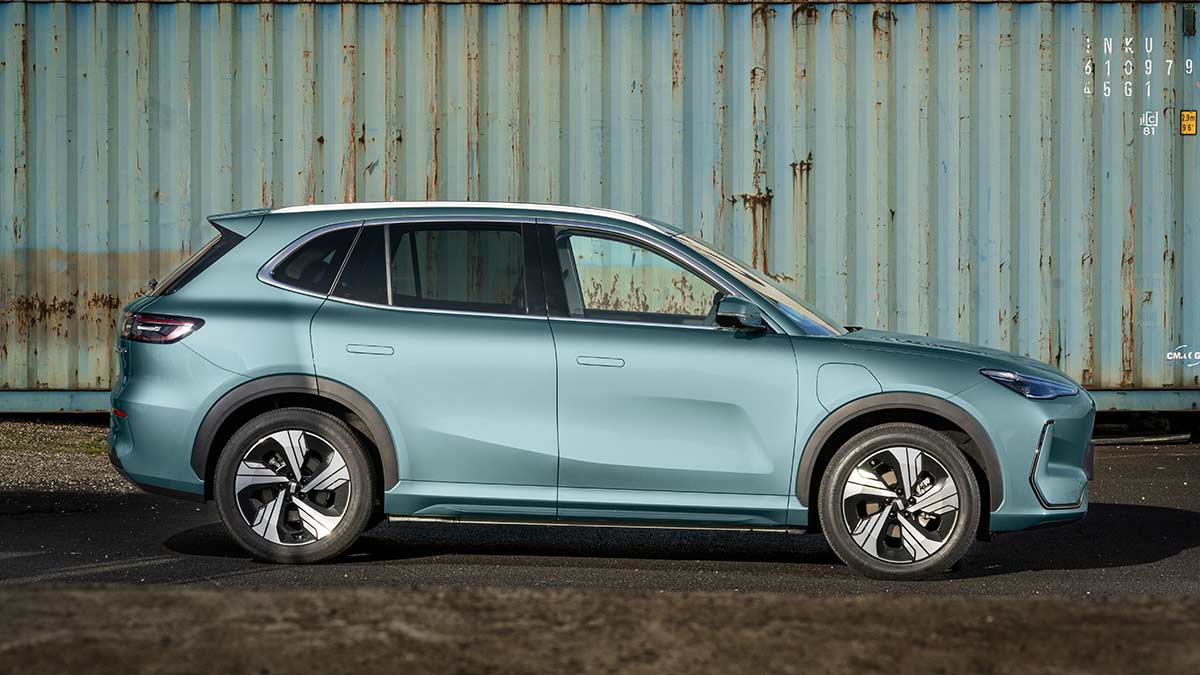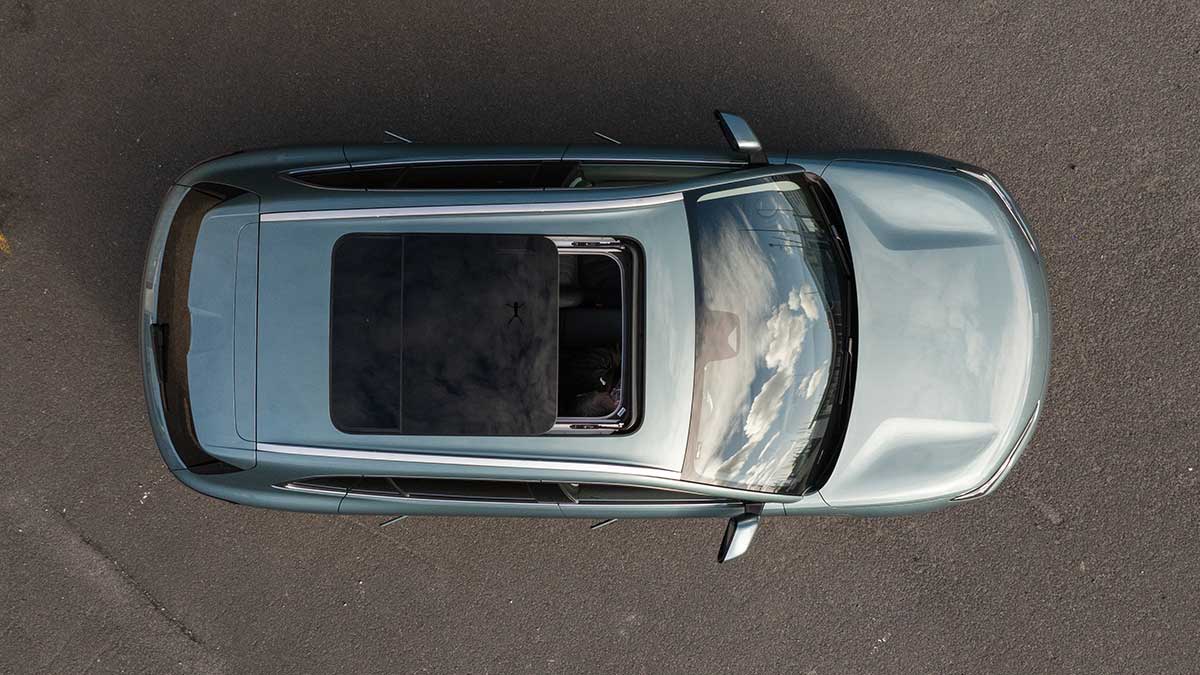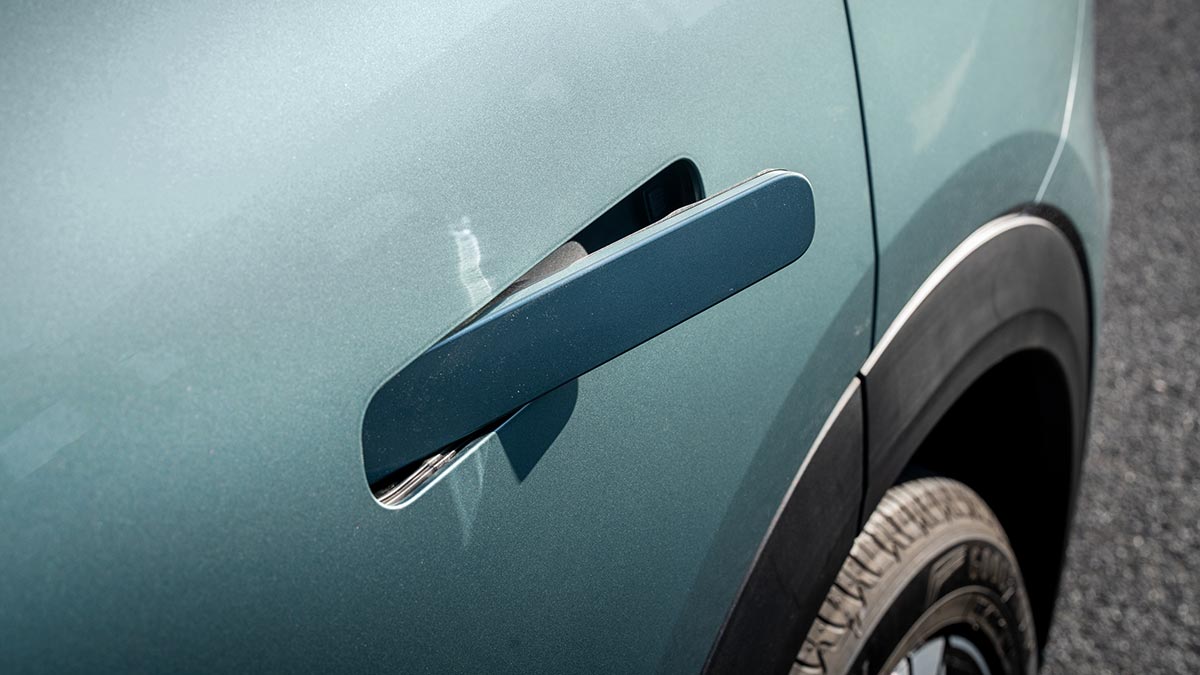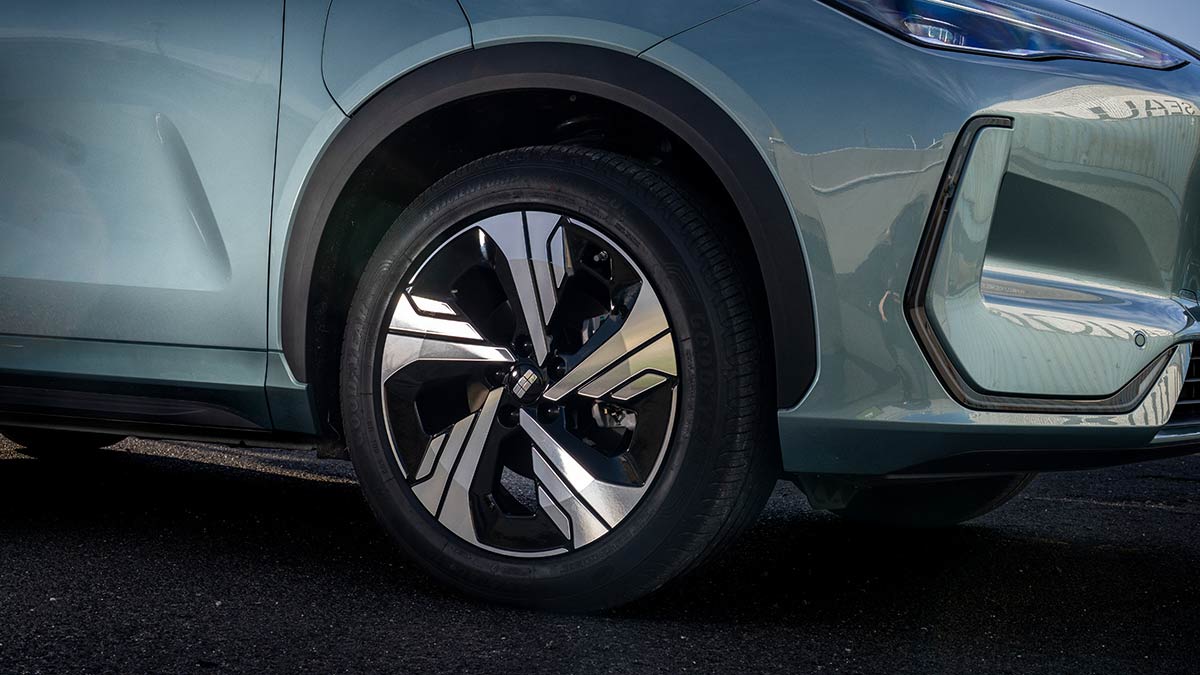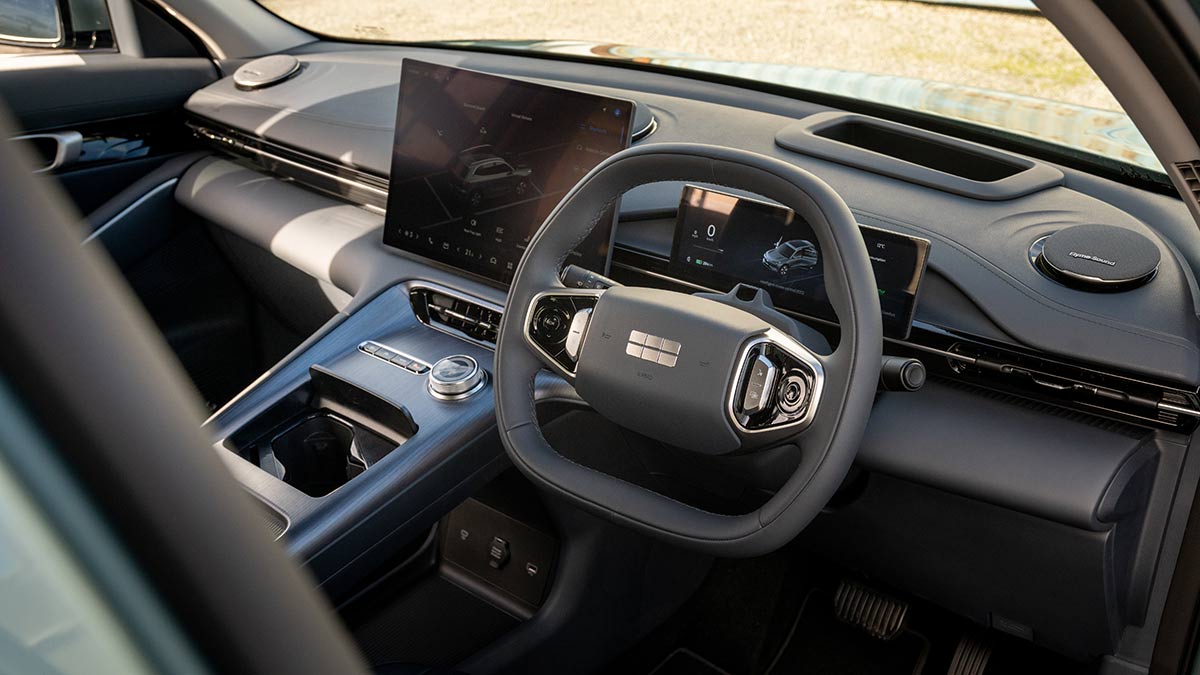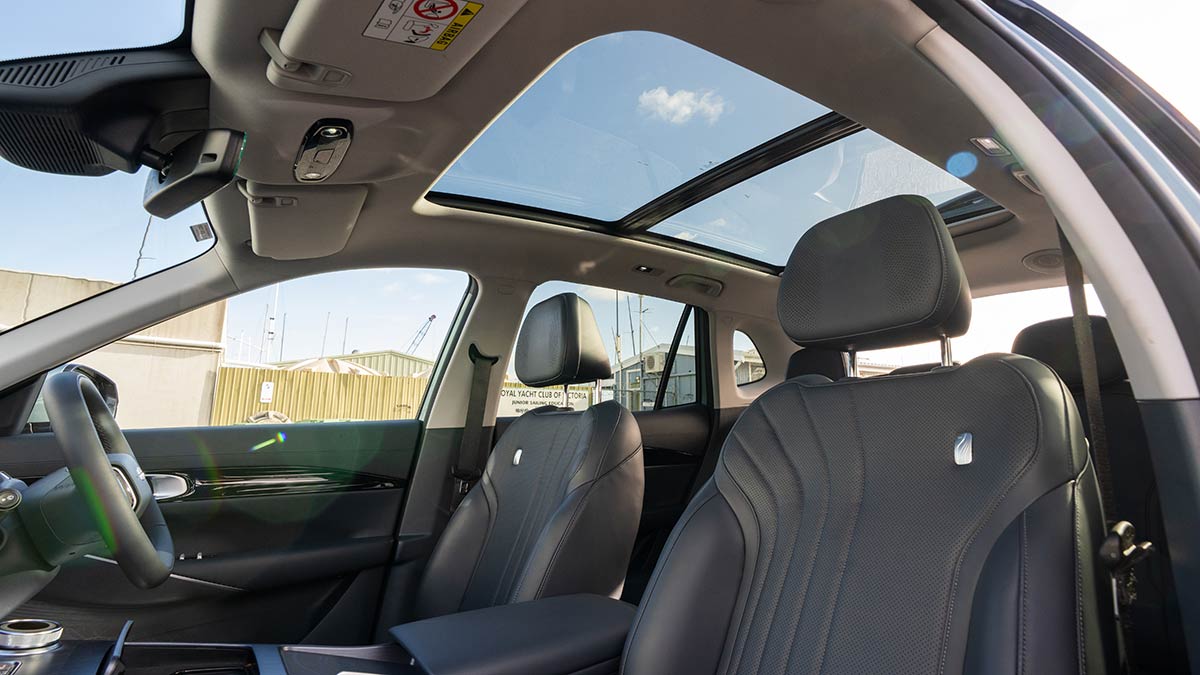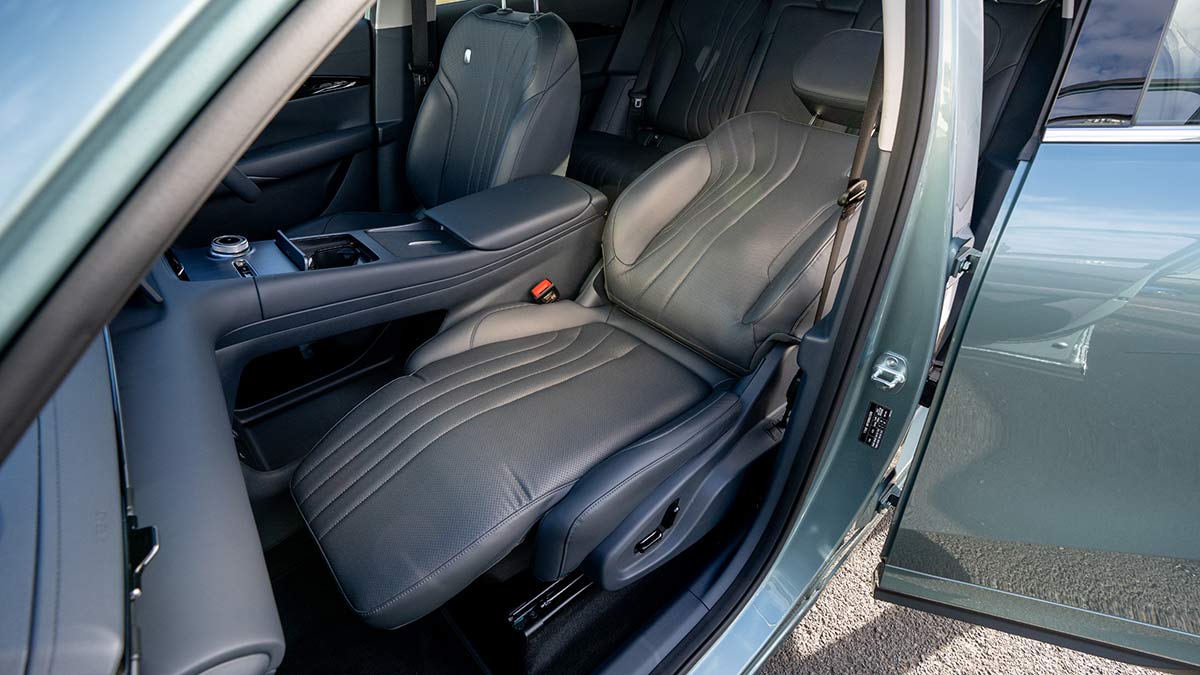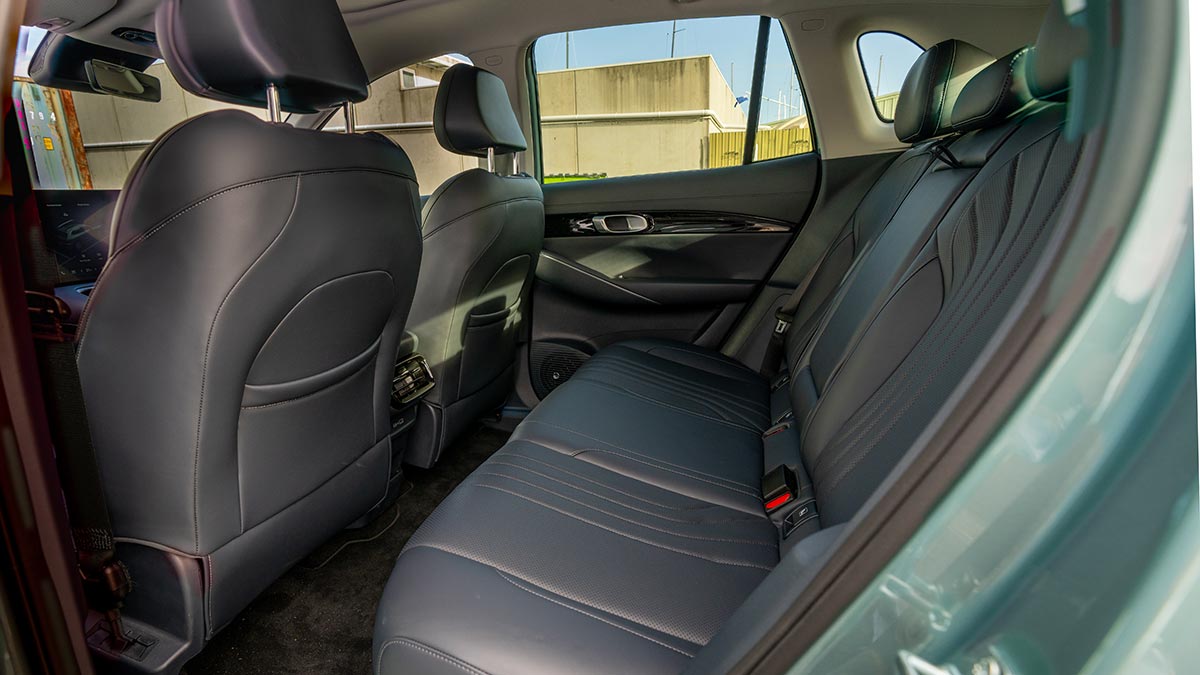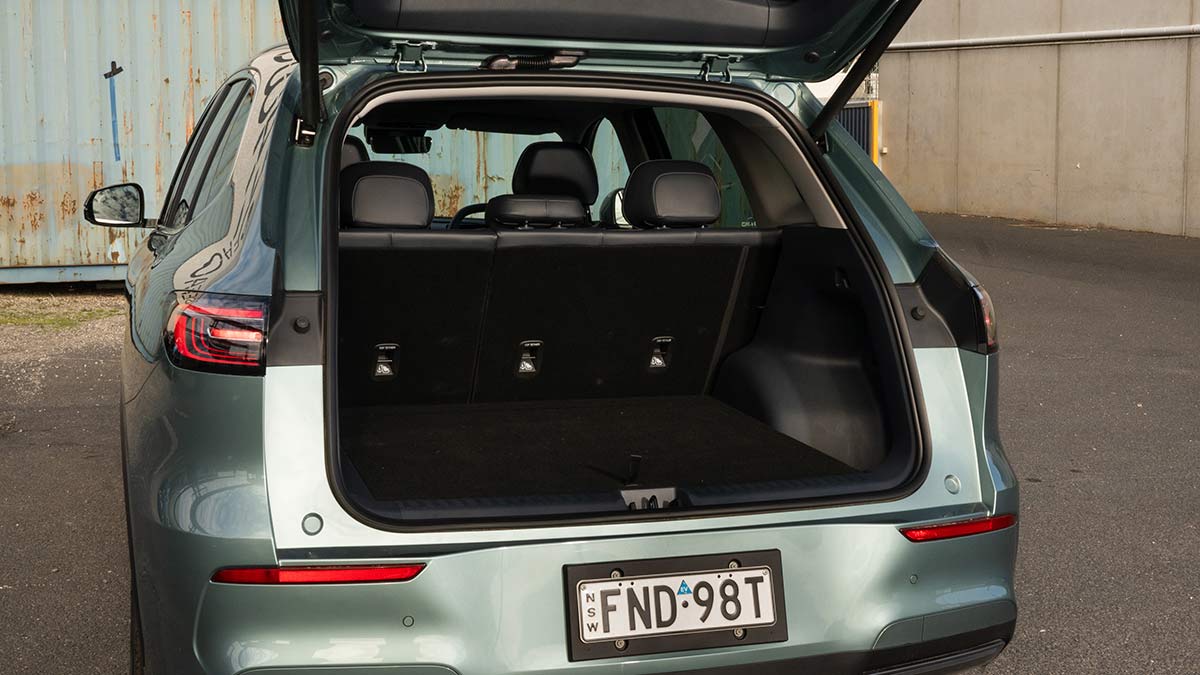The Geely Starray EM-i plug-in hybrid has arrived in Australia, with sharp pricing confirming its presence as an affordable, strong and economical new contender in the best-selling medium SUV class.
2025 Geely EX5 Inspire review
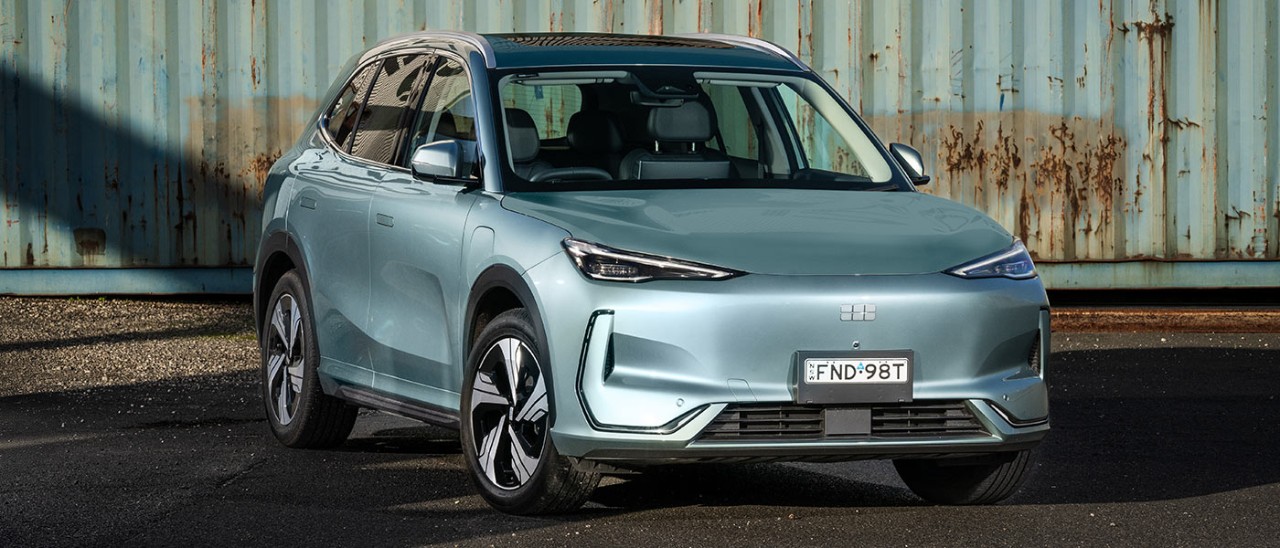
On price and features alone, the Geely EX5 is a must-drive among EVs in the popular medium SUV segment. But as a complete package, can it match the Tesla Model Y and Kia EV5?
Geely isn’t exactly a household name in Australia but some of its subsidiary brands like Volvo, Lotus and Polestar are well known and, with the new 2025 Geely EX5, the Chinese carmaker is starting to draw attention to its own label.
After an unsuccessful first attempt to crack the Aussie market about a decade ago, Geely has returned as a factory-backed operation with ambitions to become one of the top 10 car brands with six EV and hybrid models launching over the next three years.
The battery-electric Geely EX5 medium SUV is the first of these and a clear statement of intent, landing in the nation’s most popular market segment with a price tag that’s low for an EV and an overall package that looks to be high class.
Is it too good to be true? Let’s put it to the test now that the EX5 is luring lots of prospective buyers into showrooms and, in just a few months, has already racked up more than 2000 sales from those who need no more convincing.
More: Search and compare new and used electric cars on sale today in Australia
On this page

The large 15.4-inch infotainment display with its home screen wallpaper image dominates the dashboard of the Geely EX5.
How much does the 2025 Geely EX5 cost?
The 2025 Geely EX5 has arrived in Australia with ultra-competitive prices for an EV, bringing the medium SUV down to levels where hybrids and traditional petrol-engine rivals are found. There are two model grades available in the EX5 range, opening with the Complete that’s priced from just $40,990 plus on-road costs ($44,376 driveaway for private buyers in Victoria). The range-topping Inspire on test here starts at $44,990 plus ORCs ($48,544 driveaway).
The Aquatic Green premium exterior paint on our review car adds $600, while the Level 1 (10A, 2kW) charging cable, which connects to a regular household power outlet, is another $385. You can also get a 3kW Vehicle to Load (V2L) cable for $209, which connects the car’s battery to a power board for running electrical appliances (a laptop, for example), while an untethered Level 2 (7kW) cable with a Type 2 plug at each end for connecting to a dedicated home EV charger, for example, retails for $269.50.
As found with most new disrupter car brands, there is a long warranty and a lot of standard equipment thrown into the mix to help allay any concerns about investing in an unfamiliar nameplate. The vehicle warranty is seven years/unlimited kilometres, with an extra year added (and no distance limit) for the high-voltage battery.
Headline features on even the base-spec EX5 include keyless entry/start, a 15.4-inch centre touchscreen, 10.2-inch digital instrument cluster, 15W wireless phone charging pad, single-zone climate-control air-conditioning, satellite navigation, digital radio, heated front seats, six-speaker stereo, the aforementioned V2L and the less common V2V (Vehicle to Vehicle) capability, the latter able to boost the battery of another EV (up to 6kW) and get it back on the road.
Geely Connected Services are also available in the EX5 via a 4G embedded SIM, opening up over-the-air (OTA) software updates, media streaming, voice control and remote functions through a smartphone app such as pre-heating/cooling the cabin, door lock/unlock and vehicle location. Access to these connected services is complimentary for the first two years (up to 2GB per month), after which a subscription fee must be paid.
Both models use the same single-motor/two-wheel drive powertrain and battery pack, so the $4000 premium applied to the Inspire is all about comfort, convenience and indulgence – it brings a panoramic sunroof, power tailgate, 256-colour ambient interior lighting, front seat ventilation and massage function, driver’s seat position memory and a power-operated footrest for the front passenger. There’s also a 1000W 16-speaker Flyme sound system complete with speakers mushrooming out of the dashboard and embedded in the front head restraints.
Service intervals are every 12 months or 20,000km (whichever comes first), with a capped price servicing scheme in place for the first seven years totalling $2052 (averaging $293 per annum). Geely also has pre-paid service plans across three ($517), five ($1190) or seven years ($1162) to encourage you to stick with its authorised dealers, which at last count comprised 27 outlets covering all states and territories except the NT. It plans to expand the network to more than 100 locations over the next few years.
More: Car servicing costs and differences: EV vs petrol vs diesel
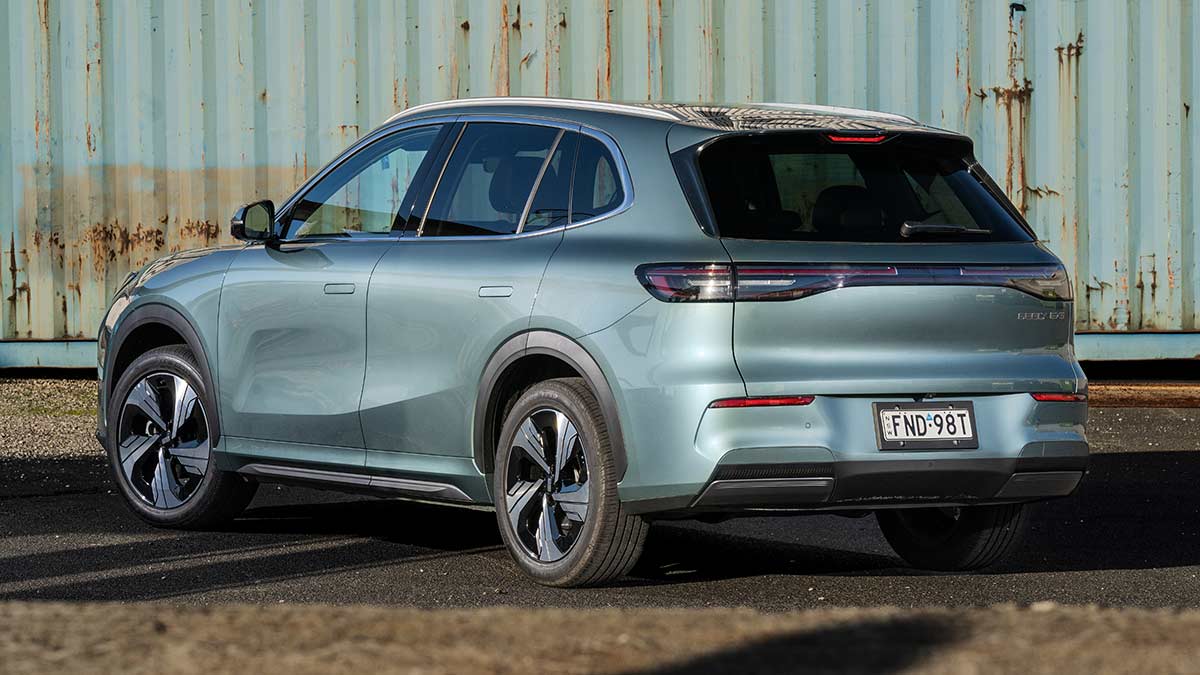
The Geely EX5 slots neatly into the medium SUV class, offering lots of room for front and rear occupants.
2025 Geely EX5 exterior design
The 2025 Geely EX5 doesn’t stand out from the swarm of medium SUVs on our roads but does attract attention from curious onlookers drawn to the unfamiliar six-square logo, the bluff front end, hollowed-out flanks and narrow LED lights front and rear.
The 19-inch alloy wheels on the EX5 Inspire have a fan blade look to them and the door handles sit flush with the body panels when on the move, aiding aerodynamics. Overall, the EX5 has a 0.269Cd drag coefficient, placing it among the most streamlined in class.
The SUV sizes up as quite tall but not overly expansive, measuring 4615mm long (wheelbase: 2750mm), 1901mm wide and 1670mm high. This leaves it shorter and narrower than the Tesla Model Y and BYD Sealion 7, for example. The Kia EV5 is a closer match.
Ground clearance is 168mm on the Inspire (20mm higher than Contender) and all models include roof rails, heated/folding wing mirrors, tinted windows and, among the plethora of LEDs, a follow-me-home lighting function. The overall build quality seems good, although condensation in the tail-light cluster took more than half a day to clear during our photoshoot. Thin plastic strips holding the AC and DC charge plugs also failed the first time we used them.
In an assertive move, the EX5 leaves no one in doubt as to its origins with three small Chinese pagodas and a bridge graphic rising out from the windscreen’s lower black frit band. Once spotted, the image is impossible to ignore from the driver’s seat or when approaching the driver’s door. The glass on the front doors and windscreen also has prominent ‘Made in China’ markings.
The pagodas remind us of the little silicone Swedish flag mounted on the edge of the bonnet of the Volvo XC40, while the four-pointed star on the driver’s door handle of the EX5 evokes the Polestar logo. Coincidence? We don’t think so. Both Volvo and Polestar are Geely subsidiaries that their Chinese parent is now leveraging in the quest for recognition and positive association.
What is the Geely EX5 Inspire like inside?
As we’ve found in other new Chinese EVs, the 2025 Geely EX5 is an appealing combination of roominess, amenities, general comfort and a few standout features thrown in to make a strong first impression. Some of this can also soon lose its lustre.
Upholstered in ‘GeeLuxe’ faux leather trim, the soft front seats in the top-spec EX5 Inspire could do with more support and miss out on lumbar adjustment, but the shortcomings are masked to an extent by the inclusion of full electric operation (six-way driver/four-way passenger), deep massaging programs (six are provided), auto/manual heating and cooling and a reclining function that comes in handy at public EV charging stations.
The front passenger seat also includes a power-operated legrest that rises for a lounge-like effect, while the driver’s seat adjusts for height and the steering wheel has reach and rake adjustment. The unusual but simple-enough-to-use oval-shaped tiller has heating, too, plus switchgear for cruise and voice control, some other functions on the instrument panel and a shortcut to the centre screen.
It’s this large centre touchscreen that dominates the EX5 cabin and, in many ways, everyone’s experience in the car. Granted, the centre console contains some hard buttons for basic air-con settings and a large rotary controller for adjusting minor things – alas, with a distinct lack of finesse – like stereo volume and home screen wallpaper (more Chinese pagodas, cute cats, seascapes, etc).
The AI assistant is also there, but a hit-and-miss affair – some functions, such as radio tuning, sunroof opening/closing and seat warming, are mostly in sync with the tech, however we often got lost in frustrating conversation with requests denied, excuses given (“I am learning this function, please try again later”) and commands completely misinterpreted. Embarrassingly, the EX5 even dived into the deep recesses of my phone’s contact list and rang an old ‘acquaintance’ without warning.
All of this still leaves the driver to frequently dig into the main screen and, at times, various submenus to make adjustments. The screen really is the nerve centre of the car but isn’t always quick to respond to inputs and can prove time consuming and distracting.
Elsewhere, there’s welcome attention to detail in the EX5 with the use of soft-touch materials, different surface textures, one-touch up/down electric window controls (albeit with a counterintuitive push forward to lower/pull back to raise action) and practical storage areas. The latter include a deep centre console box (with padded lid-cum-armrest) and a bridge between the front seats with a mobile phone ledge (including a single wireless charging pad) and double cupholders. The lower console has a tray for handbags and other bigger items, plus single USB-A, USB-C and 12V power outlets.
Apple/Android smartphone connectivity is not yet available but will be added via an OTA update; Apple CarPlay is due soon while Android Auto isn’t here until the first quarter of 2026.
The rear seat area has lots of space in all directions – there’s no headroom issues with the panoramic sunroof – and exceeds the brief with large, plush seatbacks, centre air vents, USB-A and USB-C charging points, mobile phone holder, bigger-than-expected door bins, map pockets, reading lights, a pull-down centre armrest (with cupholders) and a large drawer hidden under the seat. For parents, two ISOFIX child restraint mounting points and three top tether strap anchors are provided.
The cargo area is versatile but less impressive overall. For starters, the high-mounted floor limits luggage room, leaving just 440mm to the top of the seatbacks and 750mm to the roof lining at the tailgate entrance. Geely quotes an overall volume of 302 litres with the rear seats upright.
There’s no luggage cover and no spare wheel, just a puncture repair kit, which leaves room for a deep underfloor section that adds another 108L to the boot volume. You can also lower the main floor section 120mm to the storage bin, but this removes the ledge that’s useful for holding the tyre repair kit, warning triangle and EV charging cables. Folding the 60/40 split-fold seatbacks increases the loading depth from 860mm to around 1700mm, depending on the front seat position, however it doesn’t leave a flat floor.
There’s also no front trunk, despite the EV powertrain creating room under the bonnet.
Is the Geely EX5 good to drive?
Whether it’s the base Complete or the high-grade Inspire we’ve driven here, the 2025 Geely EX5 has the same front-mounted electric motor that produces 160kW of power and 320Nm of torque. It drives the front wheels through a single-speed transmission and draws energy from a 60.22kWh lithium-iron phosphate (LFP) battery pack.
Geely claims the EX5 Complete has a driving range of up to 430km, based on the WLTP combined test cycle, while the Inspire (which is 50kg heavier at 1765kg tare mass) has a claimed 410km range. Energy consumption is listed at 16.6kWh/100km for Inspire, up from 15.8kWh/100km on Complete.
On our test, which included a mix of heavy city traffic and country roads, we returned a much higher 19.2kWh/100km and found the real-world range in these conditions to be closer to 300km. Efficiency is nearer Geely’s claim in strictly urban running, but longer-distance trips could require some careful planning with stops to recharge.
The EX5 has an 11kW onboard charger and 400-volt electrical system that can manage DC fast-charging up to 100kW, allowing the battery to charge from 30 to 80 per cent in a claimed 20 minutes. That’s not as fast as some EVs, but not uncommon. We found a 15-90% DC charge needed a 55min pitstop (at about 60kW supply).
Like much of the drive experience in the EX5, the e-motor is sufficient for the most part without being exceptional. It’s smooth, quiet and reasonably strong, building speed in gradual fashion rather than showing a performance streak. It feels right-sized for the suburbs and is fine for open-road touring.
You can adjust the level of regenerative braking via the touchscreen but ‘high’ doesn’t enable one-pedal driving. A Sport mode is included for the powertrain, electric steering and braking, providing some extra responsiveness as well as adding artificial steering weight and brake pedal firmness. It’s not needed around town where the lighter settings are preferable, and doesn’t inspire confidence on a winding road given the EX5 isn’t set up to provide a sporting drive, whichever mode it’s in.
Instead, the EX5 suspension is tuned for comfort, absorbing road imperfections at low speeds without problem but feeling far less settled at higher speeds. Mid-corner bumps produce some kickback through the steering wheel, traction aids are quick to intervene and gravel roads put a dampener on the otherwise high levels of refinement, sending unwanted noise up through the wheelarches.
Narrower bitumen and dirt roads common in country Victoria also highlighted a serious calibration issue with the emergency lane keeping assistance system, which needed turning off (again, through submenus and multiple confirmation buttons) to enable the SUV to be driven without sounding off significant warnings and attempting unwanted corrective action.
We mention other frustrations with the driver assist tech in the next section.

The Geely EX5 is generally comfortable to drive, but its ADAS systems can be a source of frustration for the driver.
What safety features does the Geely EX5 have?
The 2025 Geely EX5 has most, but not all, bases covered in terms of its safety specification. Occupants are protected by seven airbags – dual front, front side, front centre and front/rear curtain airbags – and the driver is provided with a raft of tech to help prevent a crash occurring.
These advanced driver assistance systems (ADAS) include autonomous emergency braking (with low-speed pedestrian detection and junction assist), front/rear cross traffic alert, a 360-degree camera, automatic high beam, adaptive cruise control, tyre pressure monitoring, traffic sign recognition, blind spot detection, driver fatigue alert and various lane controls.
The surround-view camera system is terrific, providing excellent views around the car on the big screen to help with tight parking and difficult reversing manoeuvres. Less impressive, on our test, was the operation of the speed sign recognition (misreading and missing signs altogether), cruise control (braking unexpectedly when approaching corners), automatic high beam (remaining high when approaching cars from behind), collision mitigation (overreacting to surrounding cars at traffic lights and reflective signs on tighter bends) and driver distraction alert (when using the touchscreen) – and the warnings and other responses that go with them.
Rear parking sensors are standard, but front parking sensors are limited to the top-spec Inspire. This flagship model also benefits from a 13.4-inch head-up display, helping keep the driver’s eyes on the road ahead.
A notable omission, especially given the connected services Geely is offering on EX5, is an emergency call (eCall) system that automatically connects the vehicle to an emergency response centre in the event of a serious collision. In the overhead console where an eCall button is often found, Geely has instead put the hazard light button, which could be confusing for owners who are more familiar with placement on the dash or centre console.
The Geely EX5 has achieved a maximum five-star ANCAP safety rating under current 2025 testing protocols, demonstrating good overall performance across the independent safety authority’s four assessment categories: adult occupant protection (86%), child occupant protection (87%), vulnerable road user protection (83%) and safety assist (85%).
More: What is eCall and how crash detection technology can save lives
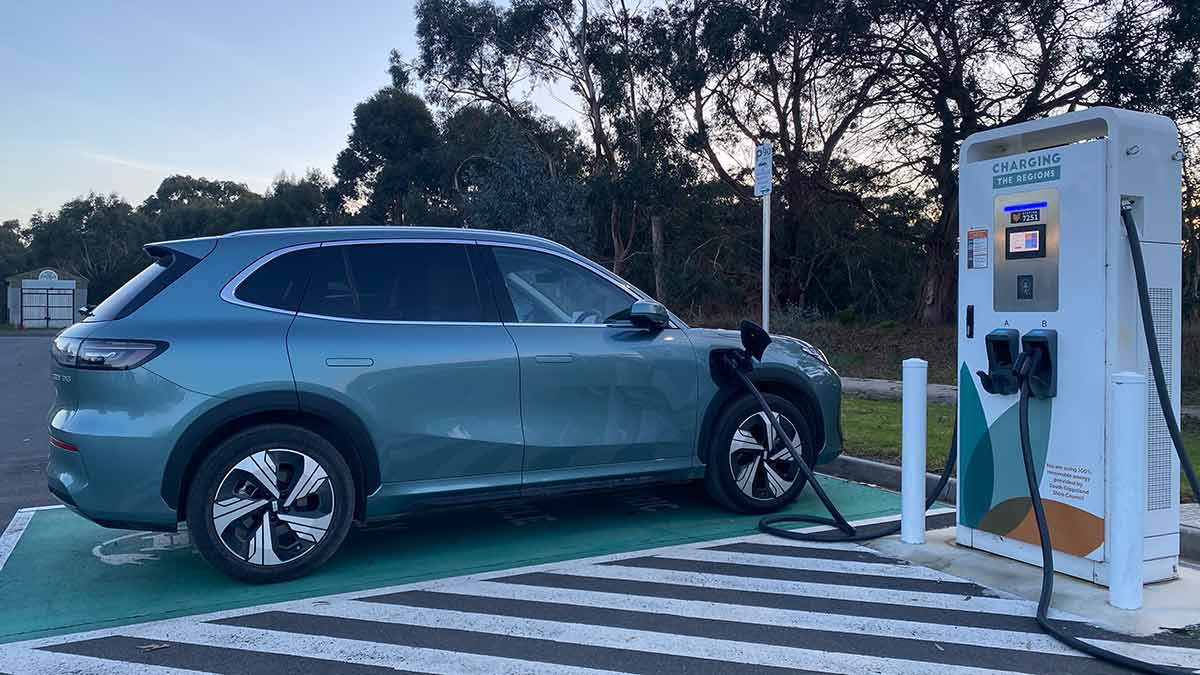
The real-world driving range of the Geely EX5 Inspire is considerably less than the manufacturer’s claim when you go beyond the city limits.
How does the Geely EX5 compare?
At less than $45,000 on the road for the Complete, and at circa $48,500 driveaway for the Inspire, the 2025 Geely EX5 commands attention in the top-selling medium SUV class, where the most popular EVs are much more expensive. These include the Tesla Model Y (from $64,120 d/a), BYD Sealion 7 (from $58,173.70 d/a) and Kia EV5 (from $56,770 d/a).
Among fellow Chinese start-ups, the Deepal S07 is available from $49,990 driveaway (MY24) and the Leapmotor C10 from $50,806 driveaway. There are also now several sub-$50,000 plug-in hybrid electric vehicle (PHEV) alternatives in class, such as the BYD Sealion 6 (from $45,610.30 d/a), Chery Tiggo 7 (from $39,990 d/a) and Jaecoo J7 (from $47,990 d/a).
The Toyota RAV4 (from $47,041 d/a) and Hyundai Tucson (from $46,990 d/a) dominate sales of regular non-plug-in hybrids in this segment, but there’s a wide selection at lower prices, as seen with the GWM Haval H6 HEV (from $40,990 d/a) and MG HS Hybrid+ (from $42,990 d/a), for example.
More: Australia’s best family cars of 2025
Should I buy a Geely EX5?
Just as Tesla and BYD have built a strong following over a relatively short period in Australia with their electrified vehicles, Geely is perhaps better placed than some other fledgling brands to follow suit.
It has some solid foundations in place with its brand connections (Volvo, Polestar, et al), growing dealer network and promised new model rollout, starting with the Geely EX5 and to be followed soon with a second medium SUV – the Geely Starray EM-i PHEV.
On the value equation alone, the EX5 is a standout for EVs in the nation’s most popular market segment and deserves a closer look. Overall, there is a lot to like, but as other upstart brands have found, more work is needed in areas such as tech interaction, ADAS calibration and the complete driving experience before it cements a position among the best medium SUVs to buy.
It’s as if the EX5’s AI assistant has already answered our question. To paraphrase: “I’m still learning.”
The information provided is general advice only. Before making any decisions please consider your own circumstances and the Product Disclosure Statement and Target Market Determinations. For copies, visit racv.com.au. As distributor, RACV Insurance Services Pty Ltd AFS Licence No. 230039 receives commission for each policy sold or renewed. Product(s) issued by Insurance Manufacturers of Australia Pty Ltd ABN 93 004 208 084 AFS Licence No. 227678.
